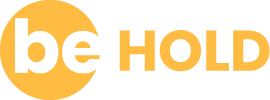
That Heart beating at the heart the world
The fourth reflection about the painting of the Sacred Heart of Jesus at St Ubaldesca Church, Paola
For as long as our hearts live on the face of the earth, they do so in faith, ablaze with overflowing love, crying out “Come!” And even if it seems that no words can explain the sighs of our hearts, may the intercessory prayers of your Spirit be acceptable to you, and you acknowledge that his desire in us is to beseech you to “Come”. “Come” we ask you, in this our flesh. “Come” we, your Bride, implore you. “Come!”
But until the final beat of your Heart draws our own hearts into yours eternally, your Heart will keep beating in the midst of the earth.
Għada tħabbat fil-Qalb tad-Dinja (Malta, Reliġjon u Ħajja, 2023), 60-61.
For as long as our hearts live on the face of the earth, they do so in faith, ablaze with overflowing love, crying out “Come!” And even if it seems that no words can explain the sighs of our hearts, may the intercessory prayers of your Spirit be acceptable to you, and you acknowledge that his desire in us is to beseech you to “Come”. “Come” we ask you, in this our flesh. “Come” we, your Bride, implore you. “Come!”
But until the final beat of your Heart draws our own hearts into yours eternally, your Heart will keep beating in the midst of the earth. Għada tħabbat fil-Qalb tad-Dinja (Malta, Reliġjon u Ħajja, 2023), 60-61.
As we celebrate the solemnity of the Most Holy Body and Blood of Christ—Corpus Christi in Latin—around this time, it is appropriate for us to cast our eyes upon the Eucharistic motifs in this painting. We see Jesus holding the glowing bread and cup. Even the top of the painting’s frame is adorned with the symbolic wheat and grapes, the basic ingredients to make bread and wine.
We might note that Christ’s pose is a ‘priestly’ one: his eyes fixed on the heavens, and holding the bread and wine, as though repeating the Doxology (“through Him, with Him, and in Him…”) that the celebrant says at the end of the Eucharistic Prayer to express the honour and glory due to the Father through Christ who offers us his body and his blood as our spiritual nourishment and drink. His body and blood … his flesh and blood… In substance, the source of the devotion towards the Sacred Heart of Jesus lies in the faith in the Incarnation—God taking on human nature, with a beating human heart sending the blood around the body.
The same routine is observed at communion: after receiving the Body of Christ, we are sent forth in peace—as if pumped out into the world—to share the gift of self to others in the same way as Our Lord, until we congregate again the following Sunday—when we are pulled back to the Lord’s heart. From Sunday to Sunday until the Lord comes again, we go forth towards the unending Sunday of the heavenly Jerusalem, where we shall all find ourselves in the embrace of that Sacred Heart (see John Paul II, Dies Domini, paragraph 84).
Until that day comes, “whenever we eat this Bread and Drink this cup, we proclaim your death, O Lord, until you come again.” This is what we state in one of the responses as we are invited to consider the mystery of faith before us after consecration. In the Eucharist, we live in this tension between what we can feel in the present and that which we shall only experience in its fullness at the end of time. It is for this reason that the Book of Revelation, the last book of the Bible, concludes with the Spirit and the Bride—the Church—saying “Come” (Revelation 22:17).
How do you live out this tension expressed in the Eucharist as the source and summit of the life of the Church? Do you hear this Heart beating when you receive communion? Can you still hear it away from church, where you become Eucharist to others, even if you find yourself in the cold and darkness? Even if you do not hear this heartbeat, worry not. What matters is that you let the Spirit lead you in accordance with its own rhythm, until you are drawn into that Heart for ever.



